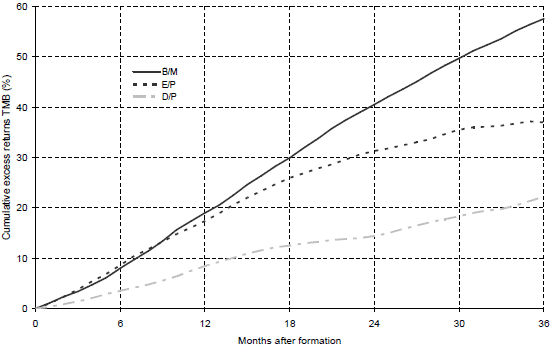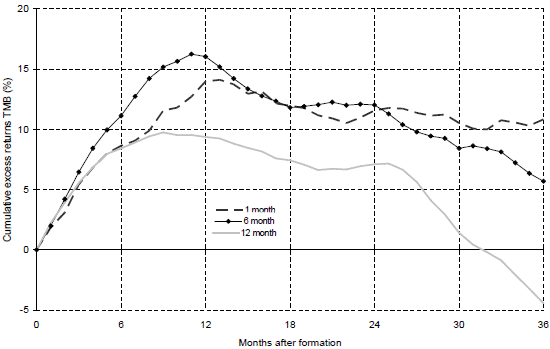Do value and momentum strategies work in the least mature equity markets? In the September 2010 update of their paper entitled “Value and Momentum in Frontier Emerging Markets”, Wilma de Groot, Juan Pang and Laurens Swinkels examine whether the value premium based on book-to-market ratio (B/M), earnings-to-price ratio (E/P) or dividend-to-price ratio (D/P) and the momentum effect exist in frontier equity markets. Their basic methodology is to form long-short portfolios of equally weighted extreme (most and least attractive) quintiles monthly and to hold each portfolio for six months, with monthly outcomes calculated as averages for the six active portfolios (in excess of U.S. Treasury bills). Using return and accounting data for over 1,400 S&P Frontier Broad Market Index stocks from 24 of the most liquid frontier markets over the period January 1997 through November 2008, they find that:
- Over the entire sample period, the average monthly equal-weighted return (standard deviation of monthly returns) of the 24 frontier markets is 0.82% (4.1%), compared to 0.53% (4.4%) and 0.64% (7.2%) for developed and more mature emerging markets, respectively. While individual frontier country market volatilities range above 15%, the low volatility of the group derives from low correlations among them.
- Portfolios from from top-minus-bottom quintiles sorted on B/P, E/P and D/P generate average excess gross monthly returns of 1.40%, 1.53% and 0.59% per month, respectively. The excess return of the B/M portfolios derives almost equally from the long and short sides, while the long sides drive excess returns for the E/P and D/P portfolios.
- Portfolios from top-minus-bottom quintiles sorted on six-month past returns generate an average excess gross monthly return of 1.69% over a six-month holding period, about two-thirds of which comes from the long sides. Cumulative returns peak at about 12 months (see the second chart below).
- Both the value premium and the momentum effect are reasonably robust to regional/country influences, liquidity and portfolio formation rule variations.
- Value and momentum strategies within the group of frontier markets correlate negatively, offering mutual diversification.
- Value and momentum strategies for the group of frontier markets generally correlate negatively with corresponding strategies in developed and more mature emerging markets, offering diversification for a global portfolio.
The following two charts, taken from the paper, summarize average cumulative returns for value and momentum hedge (top-minus-bottom quintiles – TMB) portfolios formed monthly across frontier markets during January 1997 through October 2008.
The first chart shows that portfolios that are long (short) the fifth of stocks with the highest (lowest) B/M, E/P and D/P on average continue to appreciate for at least three years after formation, with B/M offering the best long-term performance.

The second chart shows that portfolios that are long (short) the fifth of stocks with the highest (lowest) one-month, six-month and 12-month past returns on average continue to appreciate for one year or less and then exhibit reversion.

As described by the authors, collection and grooming of the data required to implement these strategies for frontier markets is cumbersome, and shorting of stocks in these markets is problematic.
In summary, evidence indicates that the value premium and momentum effect exist at a gross level among frontier market stocks and that these anomalies are both mutually diversifying and diversifying for a global portfolio.
Note that trading frictions would materially degrade the returns presented.